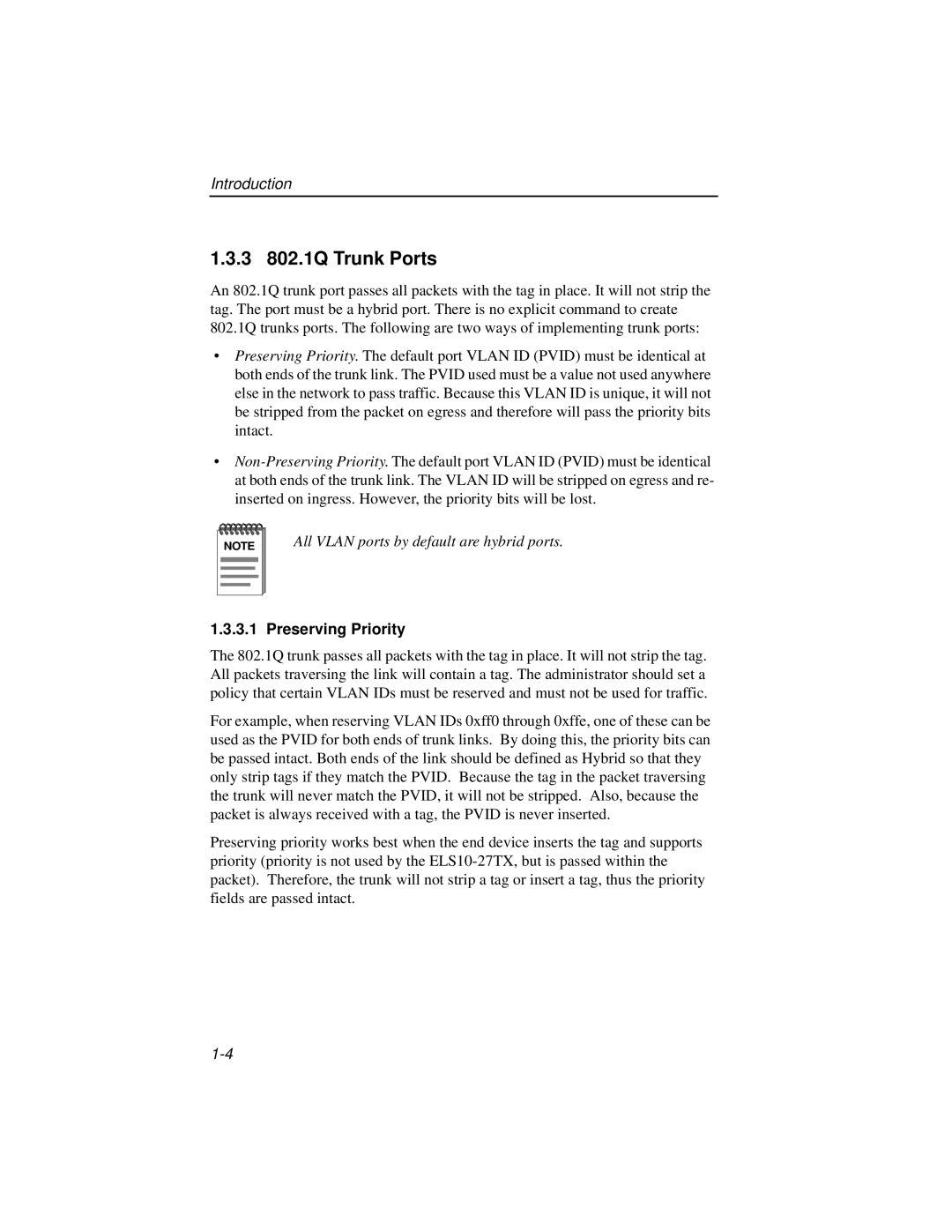
Introduction
1.3.3 802.1Q Trunk Ports
An 802.1Q trunk port passes all packets with the tag in place. It will not strip the tag. The port must be a hybrid port. There is no explicit command to create
802.1Q trunks ports. The following are two ways of implementing trunk ports:
•Preserving Priority. The default port VLAN ID (PVID) must be identical at both ends of the trunk link. The PVID used must be a value not used anywhere else in the network to pass traffic. Because this VLAN ID is unique, it will not be stripped from the packet on egress and therefore will pass the priority bits intact.
•
NOTE |
All VLAN ports by default are hybrid ports.
1.3.3.1 Preserving Priority
The 802.1Q trunk passes all packets with the tag in place. It will not strip the tag. All packets traversing the link will contain a tag. The administrator should set a policy that certain VLAN IDs must be reserved and must not be used for traffic.
For example, when reserving VLAN IDs 0xff0 through 0xffe, one of these can be used as the PVID for both ends of trunk links. By doing this, the priority bits can be passed intact. Both ends of the link should be defined as Hybrid so that they only strip tags if they match the PVID. Because the tag in the packet traversing the trunk will never match the PVID, it will not be stripped. Also, because the packet is always received with a tag, the PVID is never inserted.
Preserving priority works best when the end device inserts the tag and supports priority (priority is not used by the
